FREE: COMBINED CYCLE MAINTENANCE PLANNING
HRSG steam pipe leaks downstream of the attemperators.
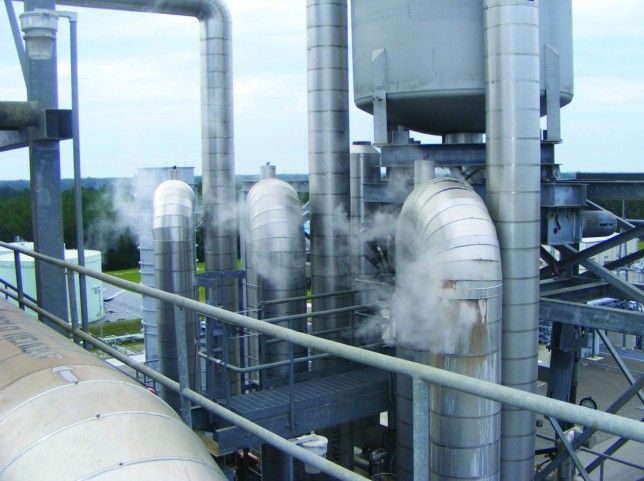
HRSG MAINTENANCE SHOULD BE COORDINATED WITH SCHEDULED OUTAGE WINDOWS FOR GAS TURBINES AND STEAM TURBINES
Whether it is a car or a combined cycle plant, the key to reliable operation of any power equipment is a successful maintenance plan. This helps maintenance managers plan ahead, minimize unexpected failures, and accommodate limitations imposed by financial and outage resources. Cost, outage time and contractor manpower are some of the factors to be considered
. Each plant may choose a different maintenance plan. Some may want to maximize the synchronization of Heat Recovery Steam Turbine (HRSG) maintenance with the overhaul of the gas turbine (GT) or steam turbine (ST) to take advantage of outage time. Others may strive to level their costs by shifting as much HRSG maintenance to the years before or after the GT and ST outage window to avoid large peaks in annual maintenance costs.
This is important when you take into account the fact that hundreds of F-class or larger HRSGs were commissioned in the 2000-to-2005 time period. This means many are about half-way through their original specified design life.
Figure 1: Replacement of attemperator piping must be planned well in advance
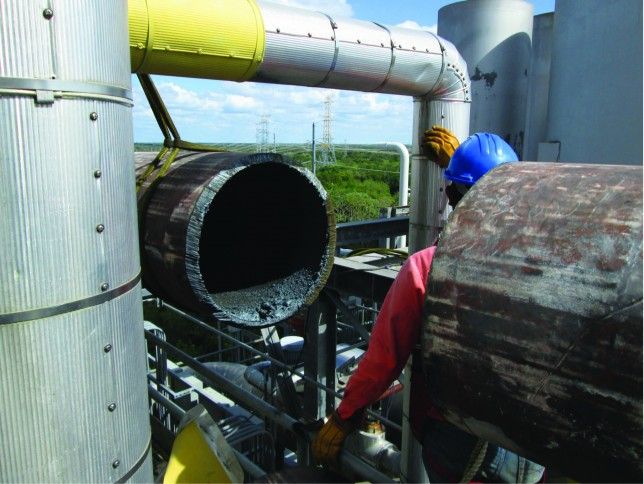
Component redesigns
Factor in the sharp increase in plants conducting HRSG cycling, and many of these HRSGs can expect to need major component redesigns and replacements in the next ten years. That means combined cycle power plants will need more focus and coordination over the next few years than they did in the previous ten to identify and plan for the likelihood of HRSG capital projects.
There are several large HRSG projects that managers of combined cycle plants should assess thoroughly and include in any forecasts being done as part of GT and ST maintenance planning. Attemperator piping failure and replacement is a vital area to take into account (Figure 1).
Problems in this part of the HRSG are usually caused by a desuperheater overspray and short distance from a feedwater inlet to downstream elbow where liquid water is not able to completely vaporize before it comes into contact with a pipe and quenches it.
Desuperheater overspray is an operational issue and can occur when steam is sprayed to saturation or within 50°F of saturation temperature. But even well designed and properly operated desuperheater arrangements can experience a pipe failure.
All it takes is one leaky feedwater valve or faulty desuperheater probe. Some gas turbine upgrades from OEMs that allow lower loads and changes to the turbine exhaust conditions can aggravate this problem. Issues with attemperator piping are no small matter as redesigned piping systems can take 40 or more weeks to design and supply. Their assessment involves visual inspection of superheaters and reheaters for bowing, check of performance data to look for indicators of overspray, and quality non-destructive evaluation (NDE) of piping locations at risk to stress and cracking.
Another common area of combined cycle maintenance is duct burner replacement. This occurs due to burner failure from cracking initiated at the nozzles or from overheated, warped and burnt away components. Detection requires visual inspection, both off-line and on-line, and review of maintenance history of comparable designs (Figures 2 & 3).
Poor burner flame patterns or burner element failures may force a derate of a steam turbine generator from its maximum full-load, full-duct firing power output. A burner derate on one HRSG can affect not only that HRSG, it can also derate adjacent HRSGs if they are part of a 2x1, 3x1 or 4x1 steam turbine configuration within a combined cycle plant.
Figure 2: A badly bowed duct burner inside HRSG

With full-duct firing at full load, it becomes critical to have relatively balanced steam flows across each HRSG to avoid tube overheat problems. The challenging aspect of a thorough duct burner inspection, however, is checking elements at higher elevations.
It would therefore be wise for maintenance managers to plan on building a scaffold, mobilizing a Sky Climber or even a drone inspection as a part of a regular maintenance. This is especially important if a history of duct burner problems already exists.
Problem areas include:
• Low Pressure (LP) Evaporator replacement or modification due to flow-accelerated corrosion (FAC) damage (Figure 3) or inside diameter (ID) pitting problems
• High Pressure (HP) steam drum weld cracking from multiple start-ups and shut downs
• Economizer replacements or modifications due to FAC damage, ID pitting or cycling driven failures (Figure 4). Similarly, accumulation of ID deposits in evaporators may require chemical cleaning and even replacement in the case of extensive tube damage.
Issues in these areas can be accelerated due to frequent on and off cycling of the gas turbine. This is becoming more common if power plants are to remain competitive on a grid with abundant renewable assets.
Figure 3: Removal of a low pressure evaporator header with flow-accelerated corrosion damage
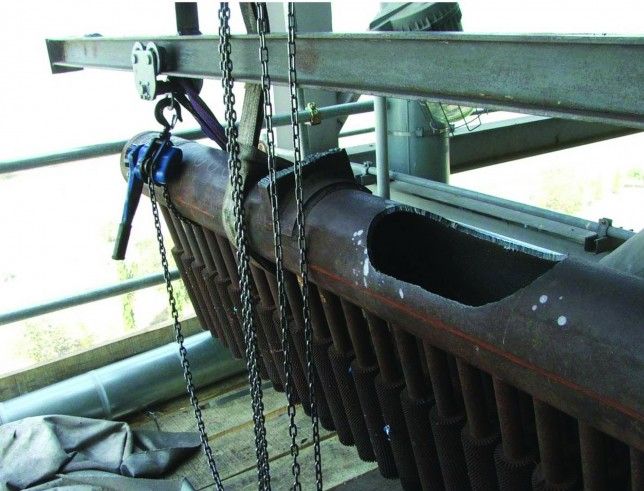
Economizers and LP evaporators become vulnerable to pitting and chemistry issues, further aggravated when they are offline and in wet-layup waiting for the opportunity to run. FAC, pitting and chemistry related issues are all internal and can be caught early with a borescope.
Therefore, periodic borescope inspections should be a part of a combined cycle maintenance program. Failure to keep a close eye on such matters could necessitate the installation of a new economizer (Figure 5).
Accumulation of HP superheater and reheater creep and fatigue should be watched for, as well. High tube and header metal temperatures create creep damage while start-ups, shutdowns and low-load cycling create fatigue. Where these factors are combined, portions of HP superheaters and reheaters could have a shorter lifespan than their original design life.
Complicating any remaining life assessment is internal oxide growth within these tubes that elevates tube metal temperature, as well as changes in tube metal temperatures caused by combustion turbine upgrades that can alter exhaust conditions. Even small tube metal temperature changes can significantly reduce creep life.
Figure 4: Failed economizer return bands

To make matters worse, HRSG casing and insulation damage can lead to major repair projects because of age, especially in the hotter HP superheater and reheater module sections. Damage above these hot modules sometimes requires roof casing replacements. Floor casing corrosion in the cold modules may also require complete floor replacements (Figure 6).
Any list of HRSG maintenance inspection targets in combined cycle plants would be incomplete without a mention of expansion joint replacement, pipe penetration seal replacements, and high-temperature superheater and reheater creep and fatigue assessment for end-of-life planning. All of these projects require advance preparation and extended outages due to the length of time needed for installation.
Figure 5: New economizer being installed at a combined cycle plant.
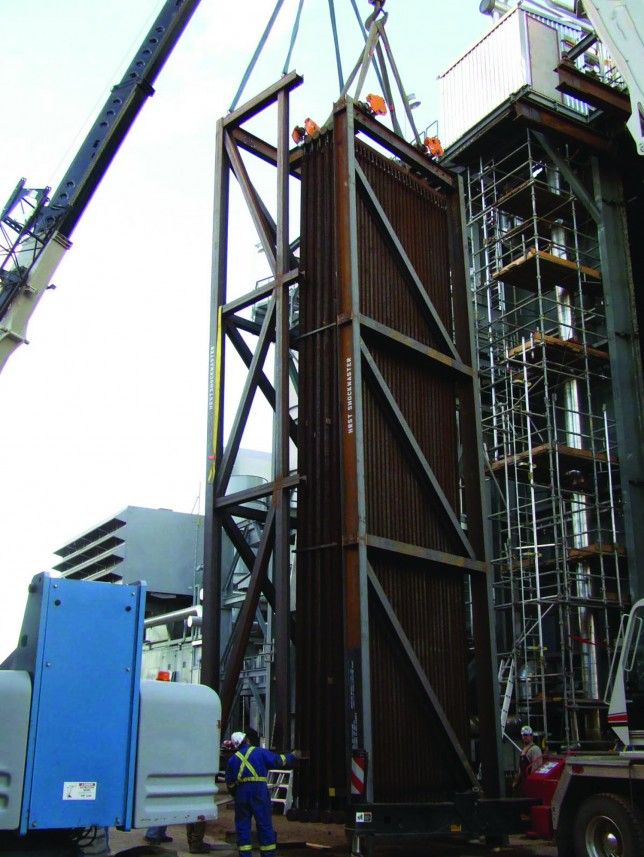
Maintenance managers would be wise to develop a multiyear planning forecast specific to their HRSGs. Such programs help to coordinate these large projects with GT outages, such as GT hot gas path inspections or major inspections that often last longer than a month.
Knowing what projects are due and the parts needed during upcoming outages helps with material sourcing well in advance (Figure 7). This will be found to be much cheaper than dealing with rush sourcing once the outage is upon you.
The above zones of investigation will differ from plant to plant. Factors impacting maintenance programs are HRSG age, hours of operation, operation profile (base loaded or cycling), OEM, current condition, failure history, and more.
Figure 6: Overheating detected on the HSRG roof module
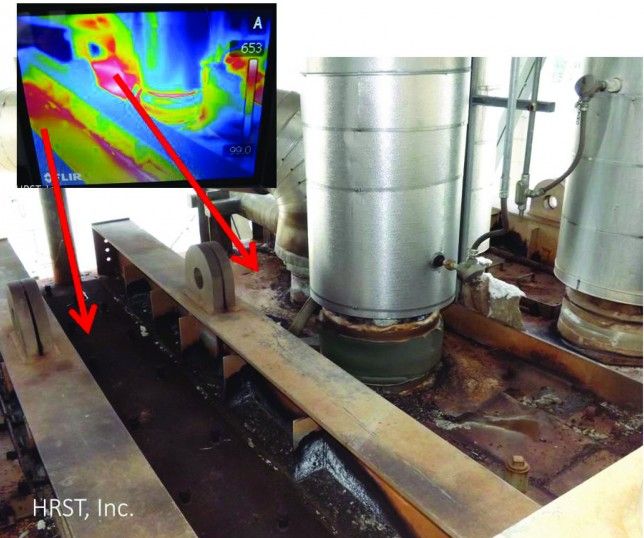
Inspect first
Good maintenance planning starts with a thorough HRSG inspection. Periodic inspections help to identify problems in the early stages and allow for general condition assessment, which in turn helps to plan and budget for more detailed inspection and future maintenance work.
It is advisable to conduct an HRSG inspection at least six months in advance of major GT or ST work. This is probably the last opportunity for a plant to identify serious issues and begin the process of ordering materials, scheduling contractors and equipment, and designing new or improved replacement components. Inspection findings may prompt additional work such as NDE, thermal imaging and lab testing.
Figure 7: Maintenance actions such as the installation of a new low pressure evaporator header require advance planning as well as coordination with scheduled GT or ST outages

A Reliability Centered Maintenance (RCM) approach should be taken when analyzing and controlling these inspection findings. The best approach is to engage in failure risk management, mitigation, prioritization and justification well in advance of planned outages. This includes the use of the Failure Modes & Effects Analysis (FMEA) process.
The value of FMEA is the expertise applied to the analysis. FMEA using only plant staff will yield results based solely on the experience at the plant level. Seeking external subject matter experts will add value to the process and improve the accuracy of the plan.
The result of an FMEA will enable prioritization of maintenance and repairs based on the level of risk being managed. This process enables management to sight risks they are managing and bring the most pressing issues to the surface. Justification support becomes streamlined as the risk mitigation results of corrective actions will be used to calculate a risk reduction and return on investment for the recommended repair.
Figure 8: Due to greater cycling in combined cycle plants, there is more likelihood of extensive HRSG maintenance actions such as the replacing of failed reheater piping
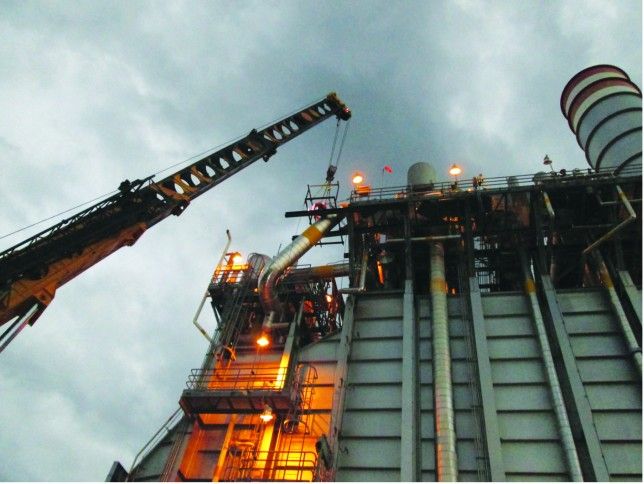
HRSGs commissioned about 15 years ago can expect to have far more maintenance projects in the coming decade (Figure 8). Thorough inspection, experience, and maintenance planning programs can help identify the most pressing issues and can help coordinate large projects with upcoming GT and ST outages.
Any combined cycle maintenance program, though, should be periodically updated based on the work performed, changing operation conditions, failure history, and other factors that may have implications on equipment operation.
Authors
Bryan Grant is a Steam Turbines Reliability Engineer and the Maintenance & Repair Planning Manager. for HRST. Since 1998, HRST has specialized in technical services and product designs for HRSGs, waste heat boilers, and smaller gas or oil fired power boilers.
Souren Chakirov is a Systems Engineer for HRST. With experience on over 200 boilers annually, HRST is able to provide inspections, analysis work, design upgrades and professional training. For more information, visit www.hrstinc.com